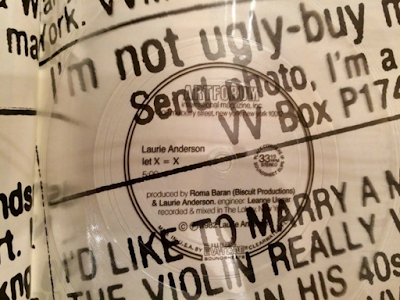Yoko Ono
Apple
New York City, USA: Self-published, 1988
8.26 x 6.99 x 6.35 cm.
Edition of 9 inscribed, dated and numbered copies
In 1988, Yoko Ono revisited a number of her earlier conceptual works from the sixties, remaking them in bronze for a series called The Bronze Age. The every day objects of the originals - things such as spoons, keys, a needle, an apple - had sat atop Plexiglas pedestals with brief accompanying texts. Of the series, Apple is perhaps the most radically transformed by the update, from the ephemeral to the permanent.
Ono described the original work (below) as being about the "excitement of watching the apple decay, and the decision as to whether to replace it, or just thinking of the beauty of the apple after it's gone". Her work often incorporated natural elements (wind, air, sky) and the iconography of fruit and seeds (Grapefruit, Acorn, etc.). She has also noted the mythology surrounding the fruit: "The apple is associated with love, sensuality, sin and temptation. The apple is the wisdom we gave to men".
The work was originally shown as part of Ono's now-infamous 1966 exhibition, Unfinished Paintings and Objects at John Dunbar's Indica Gallery in London. At a preview night before the opening Ono met her future partner John Lennon for the first time.
"He saw the apple," she recounted, years later, "You know, he didn't say anything. He just grabbed it and had a bite in it. Apple was a fresh apple on an installation like this. And he just grabbed it and bit it and looked at me like, you know, "There!" you know? I was so furious, I didn't know what to say. And it showed in my face: How dare this person mess around with my work? So he just said, "I'm sorry", and just put it on the stand again."
Ono told Uncut magazine in 2010 that her first impression of Lennon was that he looked "very beautiful, a very elegant kind of guy" and that "it would be nice to have an affair or something." But after he bit into the apple she thought "Oh well, forget it."
Lennon remembered the meeting much more positively: "an apple on sale for two hundred quid! I thought it was fantastic—I got her work immediately...it was two hundred quid to watch the fresh apple decompose".
Either way, the bite mark became immortalized in the 80's bronze version. The apple is notably not the pristine new, fresh apple, nor the eventual decomposed one (see final image, below).
















































